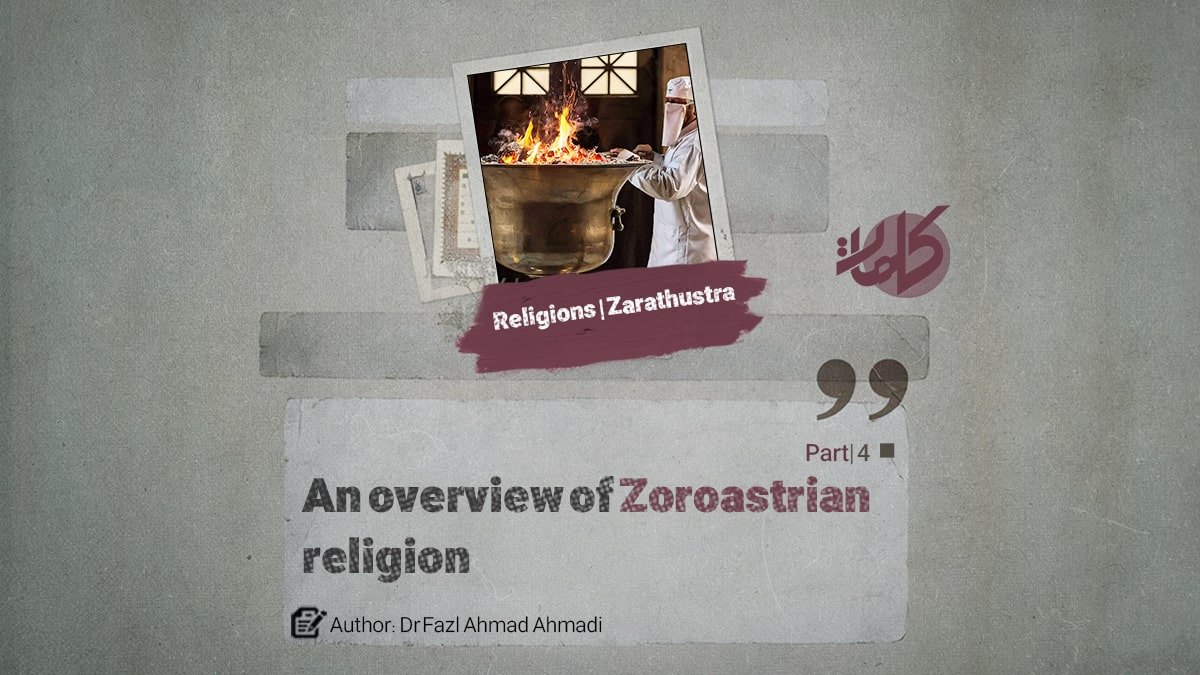
Author: D. Fazl Ahmad Ahmadi
An Overview of “Zoroastrian Religion” (Part 4)
3- Selected viewpoint
With the help of Zoroastrian internal religious documents and evidence, historical documents, and Islamic sources, this view was presented: the mission of the Prophet of Zoroastrians was not universal, whether that prophet was actually Zoroastrian or another person. Knowing the name of the prophet of ancient Iran has no relevance or influence on the chosen theory. For the ancient Zoroastrians, the divine prophet or several prophets were sent on the assumption of proof, and the mission of this prophet was limited to a specific nation and race, not comprehensive and universal. The present-day approach and practice of Zoroastrian followers also show that this religion was not a universal religion. The followers of this religion are quite aloof and engaged in dealing with their own issues, and they do not allocate any opportunity to invite and promote their religion to others.
4- Sources of Zoroastrian religion
Every religion and ritual have a set of sayings that the followers of that religion continue their lives by following them. The most important sources of Zoroastrian religion are Gahan. Sometimes (gaths) are the words or poems of Zoroaster the prophet. If we take a look at Zoroastrianism, we will find that there is no mention of jurisprudence or law. A matter that researchers and Zoroastrian worshipers have also specified; As “Mazdapour Zoroastrian” writes: “Sometimes, in reality, there is no jurisprudence and there is no law.” And in another place he writes: “The heavenly message sometimes does not include the Sharia”.
Moabed Saroshpour writes: “The most important characteristic of the ghats from the author’s point of view is that we do not see any trace of religious rules or laws (jurisprudence) and rituals and religious structure (Sharia) anywhere in the ghats.”
Also, in the later Avesta, especially the Nididad and Pahlavi religious texts and later writings, it is full of beliefs that go back to various fields of social life and people’s relationships in society.
Avesta, as another source of Zoroastrian religion, contains separate parts, each part has pieces and each piece has a characteristic called a prayer, and the combination of these prayers has made Avesta into an encyclopedic method. However, the most important sharia source of Zoroastrianism is the “Vendidad” section of the Avesta book. Vendidad is the jurisprudential part of Avesta and an extremely valuable source of information about many subjects, religious laws, rituals and ceremonies of purification and entombment of the corpse, religious affairs, geography and mythology. This book has 22 chapters. The chapters and clauses of “Vendidad” interfere with each other. In each chapter, several topics are discussed and its rulings are stated. It is said that this book was written during the Sasanian period. Others usually attribute the authorship of Vendidad to the post-Achaemenian period; Although its contents are much older than this time and even older than the time of Zoroaster. Probably, western Iran, who had a special interest in matters of purity, after converting to Zoroastrian religion, played a major role in compiling this section of Avesta.
continues…



